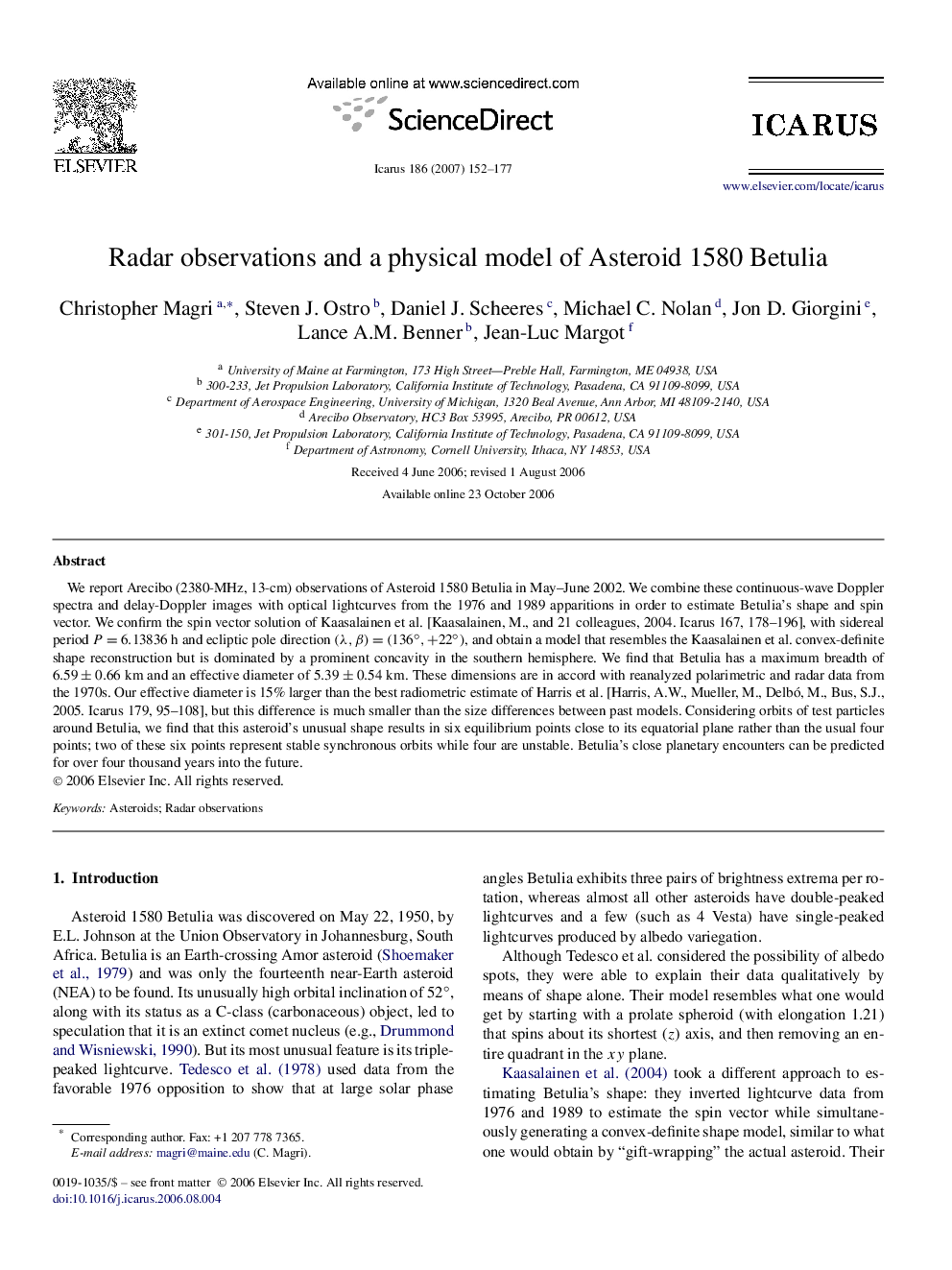| Article ID | Journal | Published Year | Pages | File Type |
|---|---|---|---|---|
| 1775773 | Icarus | 2007 | 26 Pages |
Abstract
We report Arecibo (2380-MHz, 13-cm) observations of Asteroid 1580 Betulia in May-June 2002. We combine these continuous-wave Doppler spectra and delay-Doppler images with optical lightcurves from the 1976 and 1989 apparitions in order to estimate Betulia's shape and spin vector. We confirm the spin vector solution of Kaasalainen et al. [Kaasalainen, M., and 21 colleagues, 2004. Icarus 167, 178-196], with sidereal period P=6.13836h and ecliptic pole direction (λ,β)=(136°,+22°), and obtain a model that resembles the Kaasalainen et al. convex-definite shape reconstruction but is dominated by a prominent concavity in the southern hemisphere. We find that Betulia has a maximum breadth of 6.59±0.66km and an effective diameter of 5.39±0.54km. These dimensions are in accord with reanalyzed polarimetric and radar data from the 1970s. Our effective diameter is 15% larger than the best radiometric estimate of Harris et al. [Harris, A.W., Mueller, M., Delbó, M., Bus, S.J., 2005. Icarus 179, 95-108], but this difference is much smaller than the size differences between past models. Considering orbits of test particles around Betulia, we find that this asteroid's unusual shape results in six equilibrium points close to its equatorial plane rather than the usual four points; two of these six points represent stable synchronous orbits while four are unstable. Betulia's close planetary encounters can be predicted for over four thousand years into the future.
Keywords
Related Topics
Physical Sciences and Engineering
Earth and Planetary Sciences
Space and Planetary Science
Authors
Christopher Magri, Steven J. Ostro, Daniel J. Scheeres, Michael C. Nolan, Jon D. Giorgini, Lance A.M. Benner, Jean-Luc Margot,
